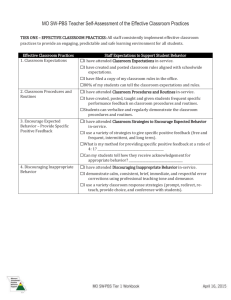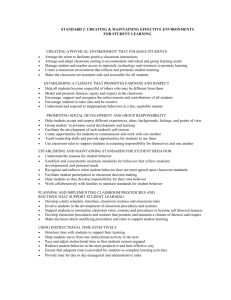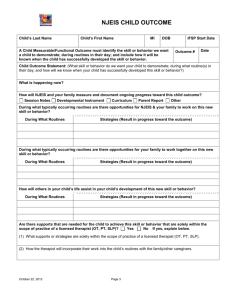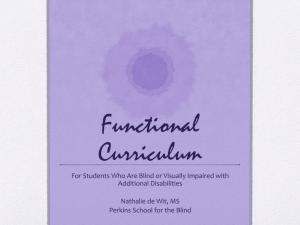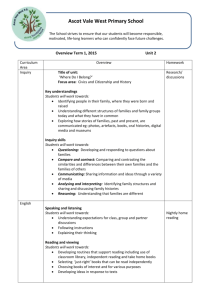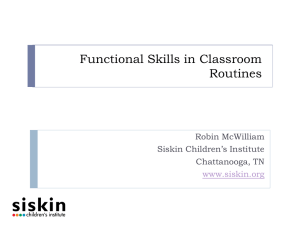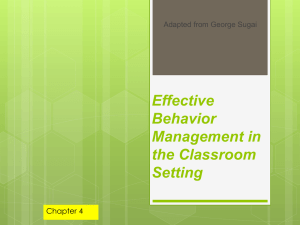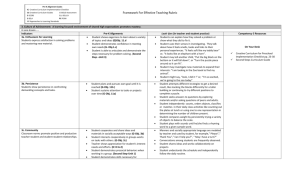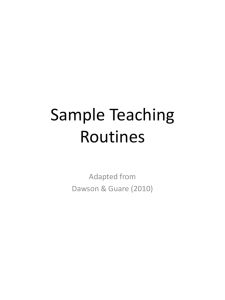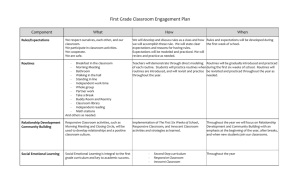Positive Behavior Support Classroom Practices Checklist
advertisement
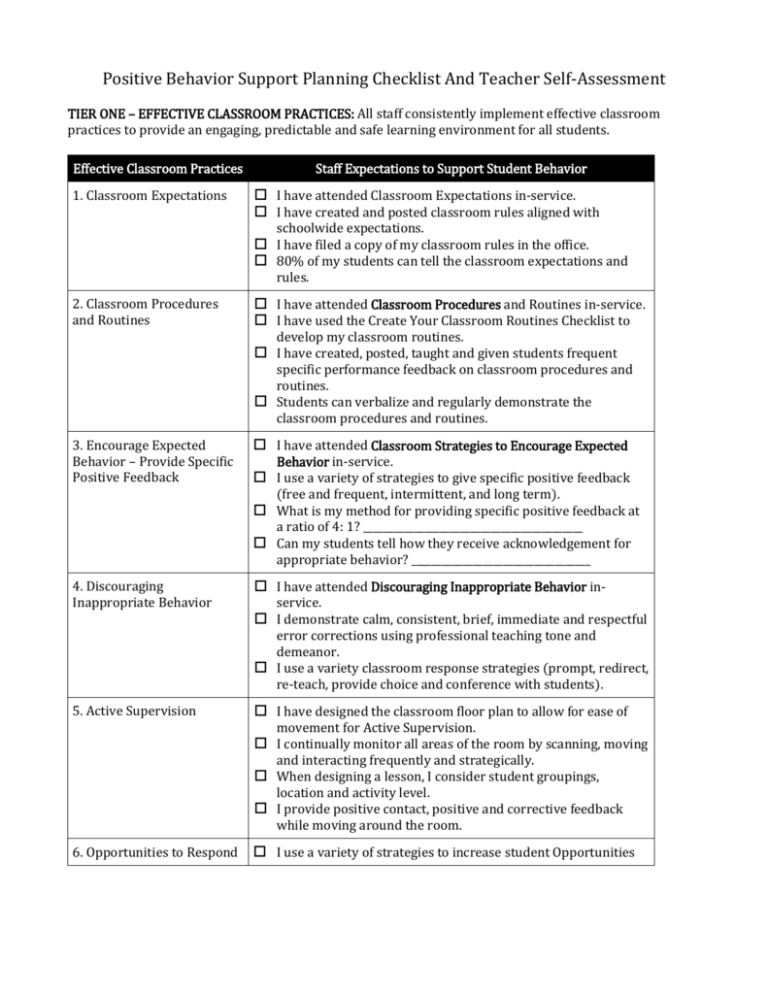
Positive Behavior Support Planning Checklist And Teacher Self-Assessment TIER ONE – EFFECTIVE CLASSROOM PRACTICES: All staff consistently implement effective classroom practices to provide an engaging, predictable and safe learning environment for all students. Effective Classroom Practices 1. Classroom Expectations Staff Expectations to Support Student Behavior I have attended Classroom Expectations in-service. I have created and posted classroom rules aligned with schoolwide expectations. I have filed a copy of my classroom rules in the office. 80% of my students can tell the classroom expectations and rules. 2. Classroom Procedures and Routines I have attended Classroom Procedures and Routines in-service. I have used the Create Your Classroom Routines Checklist to develop my classroom routines. I have created, posted, taught and given students frequent specific performance feedback on classroom procedures and routines. Students can verbalize and regularly demonstrate the classroom procedures and routines. 3. Encourage Expected Behavior – Provide Specific Positive Feedback I have attended Classroom Strategies to Encourage Expected 4. Discouraging Inappropriate Behavior I have attended Discouraging Inappropriate Behavior in- Behavior in-service. I use a variety of strategies to give specific positive feedback (free and frequent, intermittent, and long term). What is my method for providing specific positive feedback at a ratio of 4: 1? ___________________________________________ Can my students tell how they receive acknowledgement for appropriate behavior? ___________________________________ service. I demonstrate calm, consistent, brief, immediate and respectful error corrections using professional teaching tone and demeanor. I use a variety classroom response strategies (prompt, redirect, re-teach, provide choice and conference with students). 5. Active Supervision I have designed the classroom floor plan to allow for ease of movement for Active Supervision. I continually monitor all areas of the room by scanning, moving and interacting frequently and strategically. When designing a lesson, I consider student groupings, location and activity level. I provide positive contact, positive and corrective feedback while moving around the room. 6. Opportunities to Respond I use a variety of strategies to increase student Opportunities to Respond (examples: turn and talk, guided notes, response cards). What strategy do I use to track students being called on? ______________________________________________________ I regularly use wait time to increase student opportunity for metacognition. I regularly plan instructional questions and response methods prior to the lesson. 7. Activity Sequence and Choice I Sequence tasks by intermingling easy/brief tasks among longer or more difficult tasks. When designing a lesson, I consider the pace, sequence and level of task difficulty to promote each student’s success. I consider a variety of elements when offering students’ Choice (order, materials, partner, location, type of task). I develop and use a menu of options to promote student choice (examples: work stations, demonstration of knowledge). 8. Task Difficulty How do I make certain independent work contains 70-85% known elements (instructional level)? _____________________________ How do I make certain reading tasks are 93-97% known elements (independent)? _________________________________________ I use a variety of strategies to adjust Task Difficulty. I scaffold tasks by modeling, providing guided practice and chunking multi-step directions and activities.
